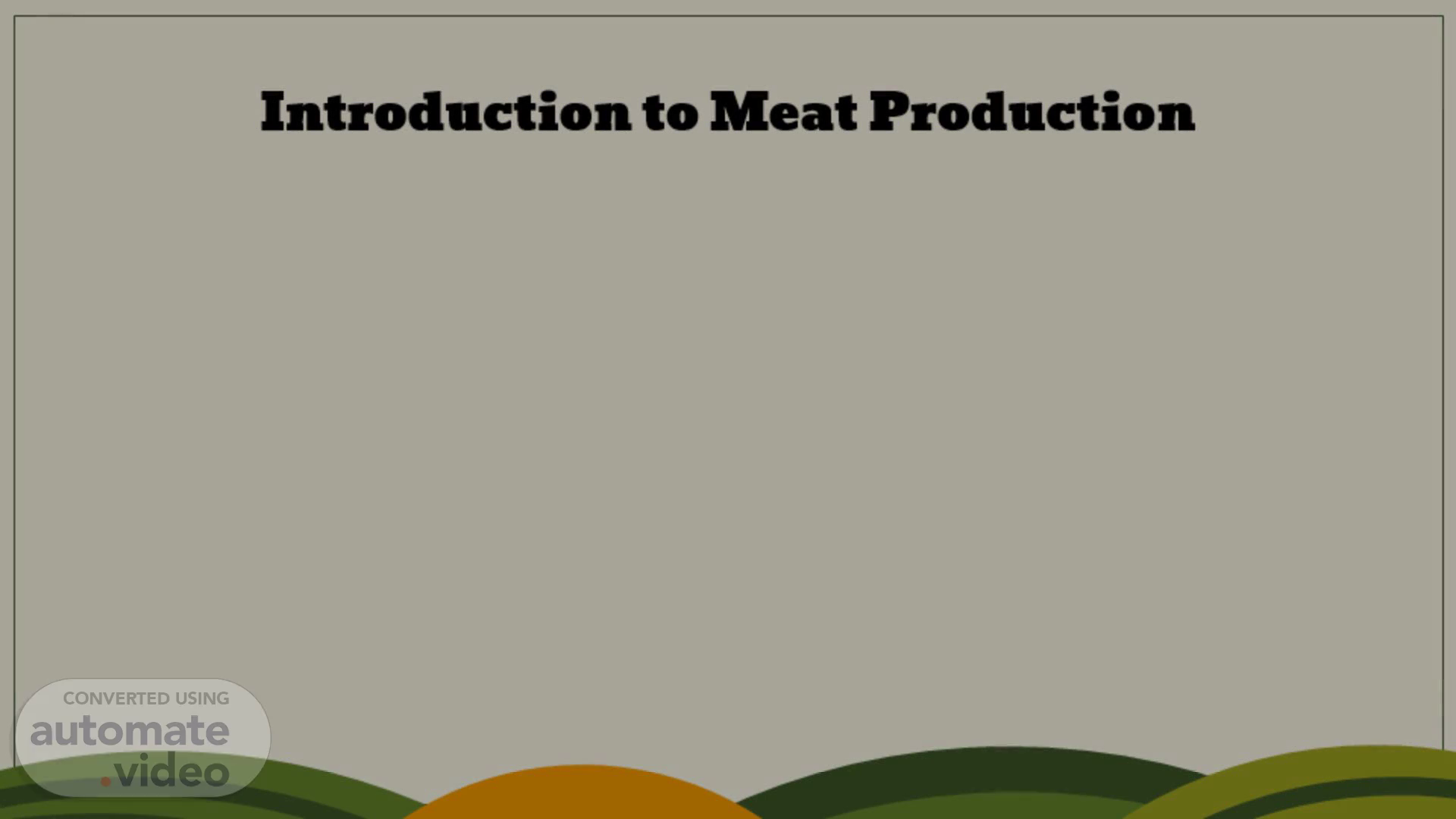
Page 1 (0s)
[Audio] Our world is presently experiencing exceptional environmental issues. Meat production is an immense factor in worldwide greenhouse gas discharges, water utilization, and land utilization. Beef generation has a tendency to be one of the most exceedingly terrible guilty parties, requiring the most water and land per kilogram of meat created. It is important to take activities to reduce the negative environmental effects of meat creation..
Page 2 (29s)
[Audio] Slide data indicates that meat consumption makes a major contribution to global greenhouse gas emissions, water consumption, and land use. Beef is the number one consumer of water and land resources per kilogram produced, whereas chicken, pork, and fish need significantly fewer resources..
Page 3 (48s)
[Audio] Pork production has a considerable environmental impact. It contributes 14% of greenhouse gas emissions from the agricultural sector. Additionally, the waste from pig farms is a major cause of air and water contamination. Deforestation, especially in the Amazon, is often driven by the requirement for land to be used for pig farming and feed production..
Page 4 (1m 14s)
[Audio] Meat production has significant environmental costs. There is a clear need to reduce the amount of resources used in the production of pork. Specifically, the carbon emissions, water usage, and land use per kilogram of pork produced are 12.31kgCO2e-q, 5,988L, and 17.36m2 respectively. These figures highlight the need to significantly reduce resource use in pork production..
Page 5 (1m 45s)
[Audio] Meat production has a huge environmental impact, particularly when it comes to beef production. As the data shows, 41 percent of livestock emissions come from beef production, and 20 percent of total global emissions from agriculture originate from beef production as well. Furthermore, an incredible amount of land is needed for beef production. On average, it requires 1.5 acres to raise one cow over its lifetime. Additionally, beef production is one of the leading causes of deforestation, particularly in regions such as the Amazon..
Page 6 (2m 23s)
[Audio] Meat production has an undeniable effect on worldwide greenhouse gases, water utilization, and land use. Out of all types of meat, beef requires the most assets. It produces 99.48 kilograms of CO2e-q for each kilogram of beef and 15415 liters for each kilogram of beef. These figures are considerable and, if not regulated with care, can be a weight on our environment..
Page 7 (2m 53s)
[Audio] Chicken production is found to have the least environmental impact compared to other forms of animal production. In terms of land and water use, as well as the amount of greenhouse gases emitted per kilogramme of meat produced, it is the most sustainable choice for those looking to eat meat while minimizing their impact on the environment..
Page 8 (3m 12s)
[Audio] Considering chicken production, one must not overlook its environmental impact. On average, it emits 9.87 kg of carbon dioxide equivalent per kilogram, requires 4325 liters of water, and uses up 12.22 meters squared of land for each kilogram of chicken. Therefore, for making wise decisions regarding food production, it is vital to factor in the resources used..
Page 9 (3m 40s)
[Audio] Overfishing and habitat destruction are significant environmental concerns associated with fish production. Fish farming, or aquaculture, can lead to water pollution from fish waste and use of antibiotics and chemicals. The impact of fish production varies depending on the fishing technique, the species targeted and the specific environmental context. Sustainable fishing practices and responsible aquaculture management can help reduce the environmental impact of fish production, and understanding the environmental impact of fish production is essential to maintain ocean health and ensure long-term sustainability..
Page 10 (4m 18s)
Fish Production: Detailed Statistics. 13.63kgCO2e-q/kg.